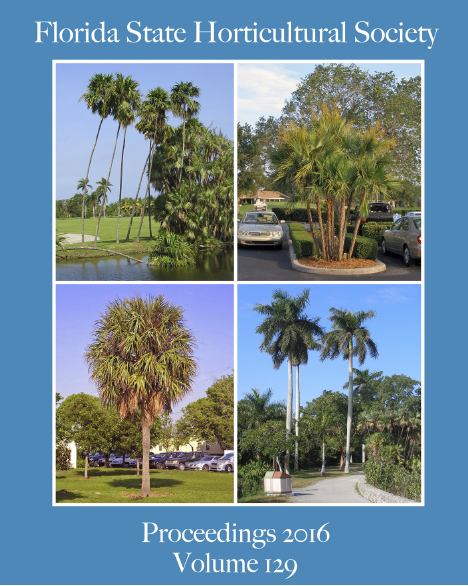Nutrient Leaching from Bananas Grown in Sphagnum Peat and Sugarcane Filter Press Mud Based Growing Media During Acclimation
Abstract
Nutrient leaching is a necessary, but wasteful part of growing nursery plants. Substrate, fertilization, and their inter-actions affect nutrient leaching. This study was designed to investigate nutrient leaching from tissue culture bananas during the acclimation phase in four different substrates. The growing media mixtures consisted of 90% and 55% sugarcane filter press mud (FP) or sphagnum peat (SP) by volume mixed equal parts of perlite and vermiculite to make up the complement of each mixture. There were 3 fertilization treatments: Osmocote Plus 15–9–12, 3–4 month release incorporated at the rates of 2.4 g/L, 4.8 g/L and 7.2 g/L. The experiment was designed as a completely randomized design factorial with each media x fertilization treatment consisting of three replicates for a total of 36 experimental units. Nitrate leaching was higher in FP treatments. Ammonium leaching was higher in SP treatments. Phosphorus leaching was higher in SP treatments. The lowest level of fertilization in the SP treatments had mean phosphate-phosphorus (PO4 -P)leaching two times as high as the highest mean PO4-P leached in FP treatments. Potassium leaching in FP treatments was higher than in SP treatments. The high levels of nitrate-nitrogen (NO3-N) leaching indicate that N fertilization practices when using FP-based media could be adjusted to match the amount of N needed by the plant. The volume of leachate was higher for FP-based substrates. Adopting an evapotranspiration based irrigation regime would decrease mass of nutrients of leached, and would benefit both the grower and the environment.

